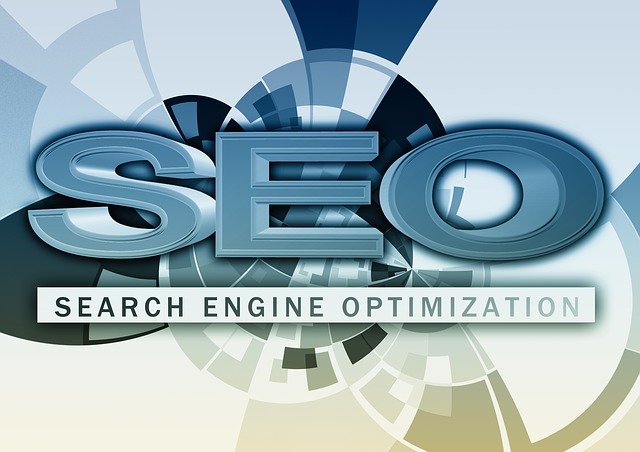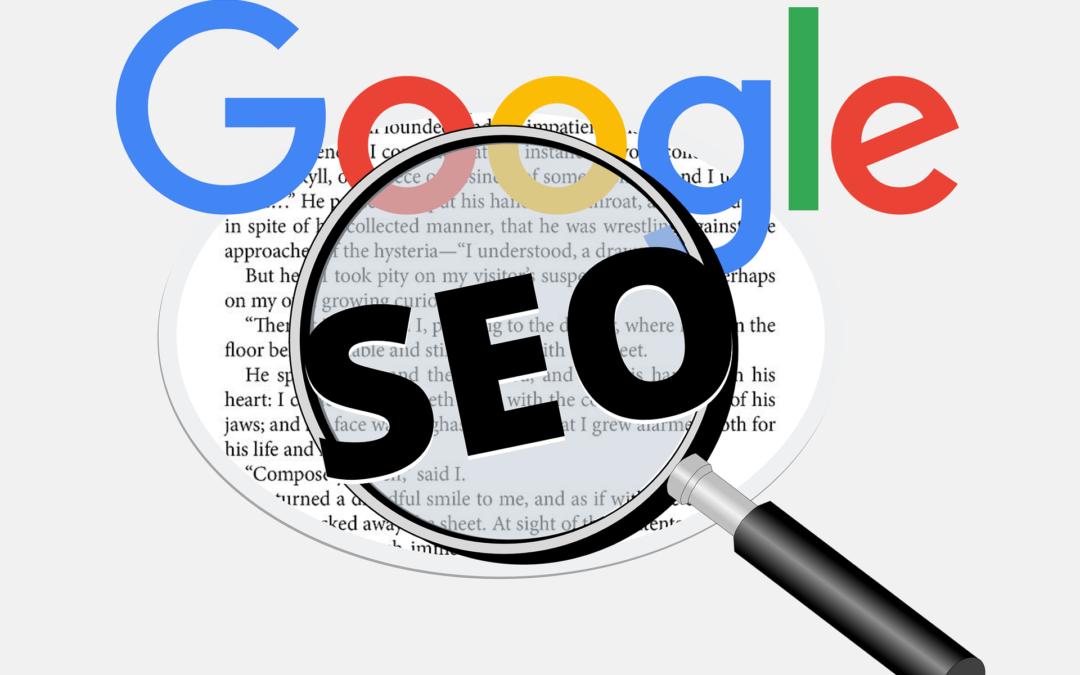
by shannon | May 24, 2021 | Baltimore SEO
Protect Your Website From Hackers
Keeping your website safe needs to be one of your priorities. There is nothing scarier than seeing all of your hard work completely changed or deleted by hackers. But, what can you do to protect your site?
There are plenty of steps that you can take to prevent hacks. They can happen to anyone- big and small businesses are both at risk! That’s why it is so important to put additional protections in place. If you want to learn more, be sure to keep reading. Everything you need to know is in this article!
Set Up Auto Backup

There is always some risk of hackers breaking into your site, so you should always have auto-backup enabled on your website. If you are hacked, you want to be sure that you can restore all of your hard work easily.
A data breach is going to cause many problems no matter what. However, you don’t want to lose several years’ worth of work on top of that! Simply enabling your auto backups will allow you to restore the most recent versions of your site if something were to go wrong.
You can always make frequent manual backups, but auto backups are more convenient since they happen in the background. Doing so will help you feel more at ease about the status of your website.
Enhance Security Plugins

If you created your website through a content management system or portal, you can add more security through plugins. Plugins can prevent different types of hacks and make your website a much safer place. For example, if you use WordPress, you can add Wordfence or Bulletproof Security.
No matter what you use, you need to add security plugins. Not having any enabled on your site is just asking for trouble. You may want to do some research and see what options your CMS site has available. Some options are better than others, but it all depends on the platform that you are using.
Update Your Software

If you constantly update your software, hackers are less likely to break through to your site. That means keeping your CMS and plugins updated. You want to either set them to auto-update or check as often as possible for improvements to the software.
Update Passwords

While you are at it, make sure that you are updating your passwords. When one is leaked, it can cause a disaster for your website. Hackers can guess old passwords- giving them unrestricted access to your site.
Always choose a secure password. You don’t want to go for something that is too easy to remember. Never use passwords that include your personal information either, including your name, birthday, or other personal facts.
You should update all of your passwords at least every few months. Make sure you never use the same password twice and add plenty of variations between them.
Only Use HTTPS

You should only access sites that have a lock icon next to the website name. These sites are more secure and are known as HTTPS sites. They provide more protection from hackers, especially where your financial data is concerned. If you don’t have HTTPS, then customers may even be deterred from using your website.
You get the lock icon through a SSL certificate. You will have much better Search Engine Optimization results for your page when you have this feature. Plus, potential customers will feel more comfortable with your site.
Don’t Allow All Uploads

Next, make sure that not everyone can add files to your website. This could cause people to leave malicious content, instead of needed files. Instead, create a whitelist of the file extensions you know are safe. This simple feature keeps out suspicious and dangerous content.
Once you have that set, make sure that you add a maximum file size. That way, hackers can’t upload extremely large documents that cause your website to crash unexpectedly. Finally, make sure you have systems in place to scan for malware. Never open a downloaded file if you don’t have a reliable antivirus!
Use Short Error Messages
Most people don’t realize that detailed error messages can do more harm than good. They may give hackers the information they need to break through weak sections of your site. Instead, don’t reveal much in your error message.
There needs to be a fine balance when creating these messages. You want your visitors to know what went wrong, without telling them how to hack your site!
Protect Yourself

Keeping all of your software updated is going to help you protect your site. Be sure to reach out if you have questions or need some help in completing these tasks!
This article was originally posted on Virtual Surge.

by shannon | May 14, 2021 | Baltimore SEO
Ways On How Visitors Return To Your Website?
Need to know how to bring back site visitors? There are several steps that you can take, each boosting the odds of a visitor returning. However, it can be overwhelming for those new to building websites. Let Virtual Surge help!
We have everything you need to know to bring back regulars here, so let’s get started!
Create a Brand Identity

A brand identity is like the personality of your website. You want to use it on everything- your icon, messages, images, and more. Anything you post should have this identity attached to it. Doing so gives your visitors a unique and personal experience.
Plus, it helps them to remember you in the future. If your site looks like all the rest, then there is no way for them to tell you apart. Your website could easily be forgotten- making it hard to return to later!
Brand identity is difficult to overlook online today. We can assist you in building a site with a recognizable personality- leading to returning visitors.
Overall, your brand identity is the most important factor to focus on. Once you have it perfected, you will notice a surge in traffic.
Start a Newsletter

Next, you will want to start an email newsletter. Doing so helps to remind site visitors that you are still up and running. Plus, engagement is always good for boosting traffic. There are several different tools that you can test out.
Your newsletter also should showcase your brand identity. Otherwise, it will not feel consistent with your audience. Overall, your newsletter can include any information you think is relevant to you, your brand, and your audience.
Start Social Media Accounts

While you may have a website, you might not have a social media account. The more followers you have, the better your site should do as well. This can greatly increase the range of your audience, since you can share your website content on the account.
To gain a following quickly, start by posting new social media content each day. Then, as you build a following, try hosting a giveaway. These simple contests gain interest fast, allowing you to get all of the followers you need in a shorter amount of time.
Post Often

Visitors want to see new content each time they log in. That means you need to be posting often, however. Create blog posts, images, videos, and more based on your brand identity for the website. You can also make use of SEO or Search Engine Optimization.
Using SEO

SEO involves keywords that help your content to rank higher in search engines, such as Google. The higher your website, the more natural traffic you will receive. Of course, boosts in traffic mean more recurring visitors.
SEO should be a part of everything that you do. However, you will need to make sure all of your content still flows nicely; sites like Google can pick up on mistakes in content. If you have several blog pages, you can also recycle them. Changing the content to make it flow and adding more keywords is always beneficial to the growth of your website.
Make a Customer Loyalty Program
Next, you might want to consider coming up with a customer loyalty program. You can offer exclusive prices or content to customers who visit you often. You may give them coupons or free items to help keep their interest.
Customer loyalty programs are great for keeping returning customers. Plus, you can customize the program and make it truly your own.
Targeted Ads

Targeted ads can reach many social media users, helping to bring people to your site who are the most interested in you. That makes them much more likely to return again in the future. Plus, there are also retargeted ads to consider.
These ads search and appear to those who already visited your site in the past. They remind previous visitors that you are still there and waiting for them to come back. They can be useful in bringing more potential customers to your website.
Overall, targeted ads come with plenty of benefits. However, they can be too expensive for small businesses or individuals to run.
Final Thoughts
If you are struggling to keep returning visitors, then be sure to reach out to us. Virtual Surge can help you make all of the required changes to get regulars on your website. We are very familiar with the process and are confident that we can assist you with anything you need.

by shannon | Apr 30, 2021 | Baltimore SEO, Posts
Google Algorithm Changes and Updates
Any Google algorithm changes can either hurt or help you, depending on how carefully you pay attention to the changes. Even if you are determined to keep up with Google algorithm changes, it can be difficult to do so without the right connections and resources.
In this article, we are going to talk about all things Google algorithm changes and how it impacts you. More specifically, we are going to look at why Google updates its algorithm, why you need to keep up with these algorithm changes, and how to keep up with them.
Let’s get started.
Why Does Google Update Its Algorithm?
Google’s number one goal is to satisfy the user’s intent. With this in mind, Google updates its algorithm in order to improve search results for Google users. Although algorithm updates may be annoying for website owners and certain professionals, their intent is to help the user, first and foremost.
More specifically, the algorithm is meant to promote sites that have expertise, authoritativeness, and trustworthiness. As a result, the algorithm will be made in such a way to better find and promote these sorts of sites.
Why You Should Keep Up With Google Algorithm Changes
It is really important to keep up with Google algorithm changes if your profession includes optimizing websites, optimizing content for search engines, or running websites that depend on optimization. Since algorithm changes can impact tactics and SEO strategy, it’s imperative to track any changes.
For example, failing to notice an algorithm change can hurt your visibility, search ranking, organic search traffic, return on investment, conversion, revenues, and more.
Although it’s easy to think that algorithm changes are Google’s way of punishing you, the changes can actually help you in all of those ways if you pay attention. In other words, tracking changes and utilizing said changes can help improve your visibility, search ranking, organic search traffic, return on investment, conversion, revenues, and more.
Long story short, you should keep up with Google algorithm changes to ensure that the content you put out is set up in a way to maximize the algorithm changes, leading to a more successful and lucrative website.
How To Keep Up With Google Algorithm Changes
Tracking Google algorithm changes is incredibly difficult. Any bigger algorithm updates, such as core updates, will often be announced or confirmed via Twitter. However, Google sometimes updates their algorithm as much as twice a day, meaning that they don’t announce all of their updates in this way. Here are some key tactics for keeping up with any Google algorithm changes:
-
Follow the Twitter Account @searchliason
Even though Google does not update all of its algorithm changes, this Twitter account has been becoming more reliable for sharing different content that is related to upcoming changes to the algorithm. This content can help you stay ahead of the game so that the algorithm change does not hurt your search rankings.
-
Watch Traffic and Search Ranking
Using a browser’s private mode, search keywords that are most valuable or relevant to your site. Pay attention to the web traffic and search rankings. If there are any algorithm changes or differences, the search rankings will change as a result.
SEMRush includes a feature that allows you to view keyword rankings, almost as if you were searching from an entirely different location. This is an incredibly useful tool if you are looking for users far away from you. You can find this feature under Position Track Settings.
MozCast is a really unique tool that allows you to see the “temperature” of Google’s algorithm. The weather report style rating tells you exactly how turbulent the algorithm has been every day for the past month. Stormier days show that Google’s rankings are more in flux than usual.
Panguin Tool is a free SEO tool that can help you find out if a Google algorithm change has impacted organic sessions. A variety of filters are used on top of Google analytic data, making this tool incredibly easy to use.
Key Take-Aways
Google algorithm changes can make or break your website. It’s important to track these changes so as to improve your rankings and website as a whole. Although tracking it can be difficult, you can follow them on Twitter, watch search rankings, or use different tools to make the process a little bit easier.
If you need help enhancing your SEO strategy amidst Google’s turbulent algorithm changes, contact Virtual Surge today.

by shannon | Apr 11, 2021 | Baltimore SEO
How Does Search Intent Affect SEO?
An understanding of search intent often separates an okay digital marketing strategy from a highly effective one. When you first start using SEO, you can use all of the keywords and tactics in the world, but they may mean nothing if you don’t have a firm grasp of the user’s search intent.
In this article, we are going to learn about search intent, what it is, and how it affects SEO. Once you grasp the intimate relationship between search intent and SEO, you can better optimize your search intent for more hits and higher rankings. Let’s jump right in.
What Is Search Intent?
Search intent, which can also be called user intent, is the user’s primary goal whenever they search a query into the search engine. Most often, users want a specific answer or research whenever they search for a given topic.
Let’s look at an example. The person who searches “Tea recipe” has a different search intent than the person who searches “Tea near me.” Although both of these searches have to do with tea, the intentions of them are very different.
Understanding user intent can help you cater your product and services to customers who actually want them. Using the example above, you would use keywords like “black tea recipe” if your website is about tea making, not buying.
Types Of Search Intent
Even though you can search for just about anything online, there are four primary search intents to understand:
- Informational: Informational intent is whenever a user wants information, such as a recipe, history, or a person. It does not need to be a full sentence or question. For example, “Barack Obama” is considered to have informational intent since the user likely wants information about him.
- Preferential or Commercial Investigation: Preferential or commercial investigation intent is whenever the user wants to investigate a brand or service before making a decision. For example, “Best Book About Parenting” falls under this category.
- Transactional: Transactional intent means that the user wants to purchase an item. “Jeans for sale” classifies as transactional intent.
- Navigational: Navigational intent means that the user is trying to navigate to a specific website. This search intent makes it easier to find a website without typing in the URL. For example, “Netflix login” has navigational intent.
How Do You Determine Search Intent?
Determining search intent comes down to a variety of factors. Most notably, keyword modifiers are a big clue as to the search intent. More so, you can read the SERPs to find out what Google determines to be the search intent for individual terms you want to use.
Search Intent And SEO
Search intent is highly important for SEO purposes. Without understanding search intent, it can be tough to create a digital marketing campaign or platform that is effective and attracts relevant users.
Why Is It Important?
There are quite a few reasons as to why search intent is important for SEO. Most importantly, search intent is important because Google cares about it. In fact, the main goal of Google is to satisfy the user’s search intent. As a result, the main goal for SEO is to satisfy the user’s search intent simply because Google says so.
Since Google’s main priority is to satisfy the user’s search intent, your website must be optimized to do so. If it is not, Google will overlook your website for another one that better satisfies the user’s search intent.
As you satisfy the user’s search intent better, your rankings improve as well. Google ranks websites based on relevance, authority, and user satisfaction. Having content that matches the user’s intent easily helps boost your ranking overall.
More so, understanding search intent can help you have more reach across the funnel stages. To put it more simply, you can reach more users if your content is more specific. You can also reach more users at different stages whenever your content is specific. Remembering search intent can help you specify your content so as to reach more users.
Key Take-Aways
User intent is something you need to master if you want an effective SEO strategy. The user intent is the reason why the user is searching online in the first place. Only by understanding user intent can you formulate an SEO strategy that improves your ranking and broadens your reach.
If you need help understanding user intent or vamping up your SEO game, contact Virtual Surge. We will be happy to improve your SEO to reach more users and broaden your online customer base.
by shannon | Mar 27, 2021 | Baltimore SEO
The Influence Of Social Media in SEO
We live in a very connected world. Our home life and work-life are intertwined, social media pages can influence our companies, and those pesky tweets from so long ago seem to resurface when we least expect them to.
While there are so many ways that social media hurts our regular lives, there are some excellent benefits to using your social media to feed and improve your SEO. Search Engine Optimization or SEO can be improved simply by using and utilizing your social media. Don’t think you’ll make a throw-away post on Facebook just to get a few likes. Use that page to drive your content and make your users more aware!
Quality Vs. Quantity
It can be tempting to post every day on social media or even your company blog to drive audience members to your content. Hold off on posting every single day though and put up only the highest quality content you can. Research your material and make sure you’re only putting out the best information.
To put forth this quality content, you’ll need to understand who your audience are and what they’ll want to read, see, or watch. This market research will then drive your social media posts and overall site content. You can also go back through your blogs or posts and give them a boost by adding in the material that makes them a good candidate to be linked to other sites.
This quality content should also be linked to products on your website and continue to draw people in once they land on your page. Keep the website as your company’s face and be sure that it lives up to the hype.
Sharing is Caring
One of the biggest draws of social media is the way users can share information, posts, and memes across platforms and with their friends. To draw audience members to your page and make things super shareable, you’ll need to make sure it’s easy to disseminate your content through shares among friends and other audiences.
With plenty of options for sharing across platforms, your audience can take your content and share it out with their audiences. Posting on social media sites is also great for upgrading your SEO but be sure that you follow up any post with some type of call to action. This will in turn boost the sharing of your information out into the world.
Clickbait has several things going for it that make it so delightfully clickable. One of the best things you can do for your page is to create compelling headlines and captions with several visuals that catch people’s eyes. But a catchy headline doesn’t make the best content. Follow up this headline with great content that makes it impossible not to share with friends.
Social Media Profile Optimization
Before you start sharing content to your social media page and offering it up for others to share, you’ll want to be sure that your social media profiles are well optimized. This is the first thing many people see when they search for your company or companies that offer your service in their area.
Tighten up your profile to make sure it has the right ingredients that will keep your audience coming back for more. Keep your content coherent across each profile so people will see and hear the same message throughout each social media account.
Targeting and optimizing these social media profiles will help you generate more audience clicks and likes on your page thus driving up your SEO. When your audience can easily find you across lots of different platforms, the Google algorithm takes note and puts you closer to the top of the search results.
Visuals Count Too
Your visuals across your social media profiles as well as your website are going to increase your overall clicks and likes which drives you up the Google search charts. Visuals are one of the best ways to transmit information to your audience and build your brand.
Coherent visuals help develop your brand and give you more instant recognition. Try to vary up the content of your pictures and visuals but keep similar themes when you post things. Optimize your visuals by making sure they’re the right size so they load quickly for your audience and that they’re titled correctly for easy recognition by Google.
All of your content across platforms feeds into the SEO of your business. By building up your social media, you’ll benefit your business in big ways!
This article was originally posted at Virtual Surge.

















